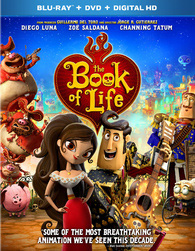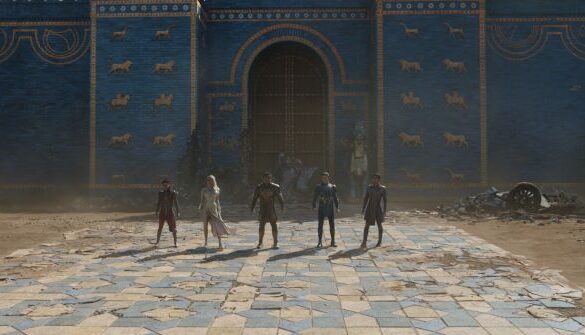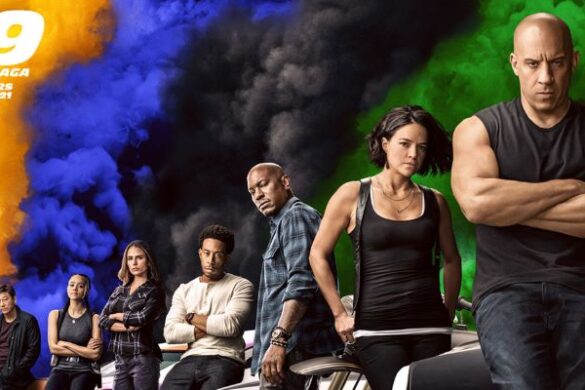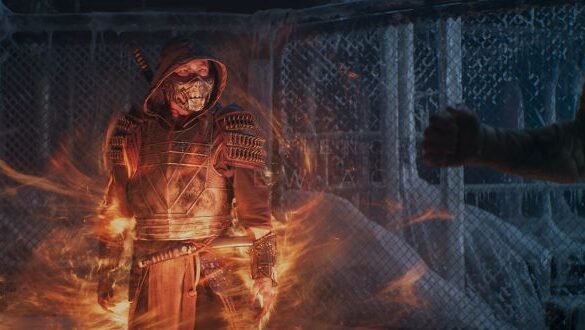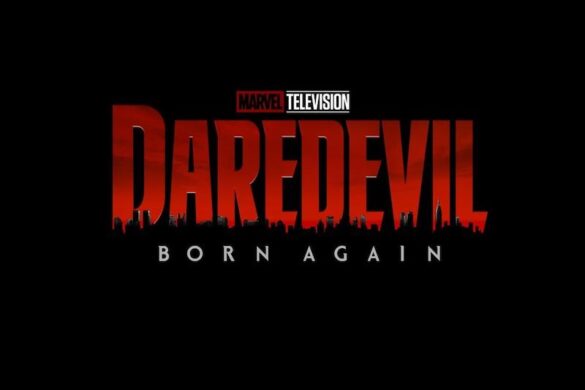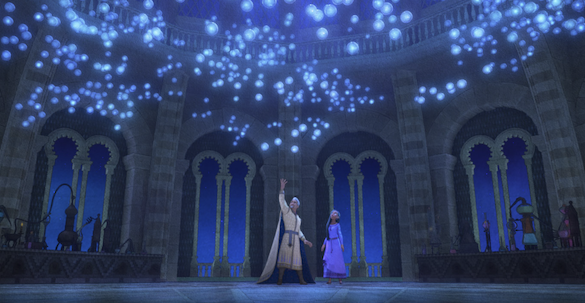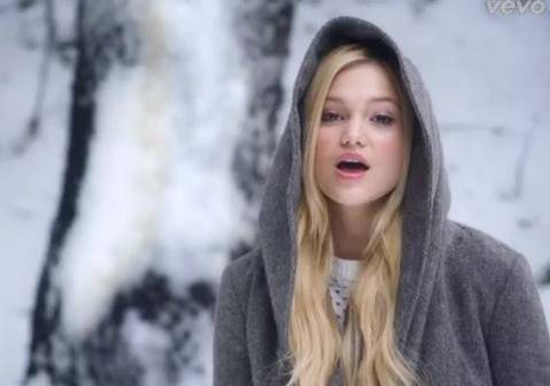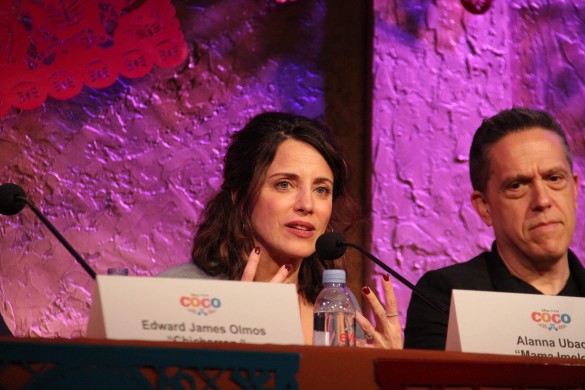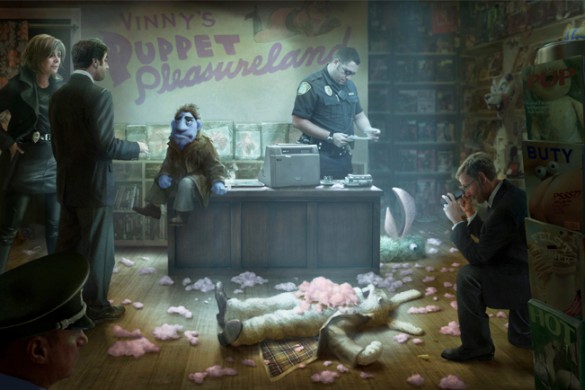 “I see animated movies all the time, and I’m an animation nerd. So, I see them even more so. I wanted to make the type of movie that we can watch hundreds and hundreds of times. And one of my favorite things was sitting with my family, watching an animated movie together at home. I think this is that type of movie.” Director, Jorge R. Guierrez’ talks proudly of his animated feature, “The Book of Life,” during a recent Q&A celebrating the film’s release on Blu-ray and DVD.
“I see animated movies all the time, and I’m an animation nerd. So, I see them even more so. I wanted to make the type of movie that we can watch hundreds and hundreds of times. And one of my favorite things was sitting with my family, watching an animated movie together at home. I think this is that type of movie.” Director, Jorge R. Guierrez’ talks proudly of his animated feature, “The Book of Life,” during a recent Q&A celebrating the film’s release on Blu-ray and DVD.
“The Book of Life” movie trailer dazzled me the first time I watched it: The lighting was gorgeous; the style of the characters looked really cool; and there was a love triangle. I was excited and honored to sit with Jorge R. Gutiérrez (Director), Gustavo Santaolalla (Composer), and Danny Trajeo (Voice of Maria’s father) to talk about the film. I quickly learned “The Book of Life” creators weren’t celebrating death: they were memorializing and honoring life! We touched on how Mexican Culture inspired the film, and how Radiohead agreed to be featured on the latin-flavored soundtrack. I even got a cool parenting tip from Machete himself.
Death is an intricate part of life. It is an organic part of a longer trip. – Gustavo Santaolalla
There’s a line in the film, “What’s with Mexicans and death?” Can you explain that line?
Jorge R. Gutiérrez: I think part of Mexican culture is this acknowledgement that some of our loved ones are not with us. It’s a very normal thing, and keeping their memory everywhere is normal. I’ve always loved this line from a poem, “death whispering in your ear at all times, live”. So, in every Mexican thing, there is a reminder that this is going to end, enjoy it.
Danny Trejo: There’s a misconception: my mom passed away two years ago and, I came back from England. We had a funeral and I thought, “Wait a minute. We are celebrating my mother’s life not her death. This movie is actually a celebration of life! Not celebrating death. When you go to East Los Angeles, let’s say, evergreen cemetery on Dia de las Muertos, it is like a big party! it’s not like people are sad or crying because they are celebrating the good parts of a person’s life. I love celebrating the life of someone’s life.
Was there any concern initially in how an American audience would perceive that: coming in with our super-sad versions of death which is unfortunate?
Jorge: Especially in the beginning, people heard Day-of-the-Dead and they thought it was a zombie movie. If you put “of the dead” in any title in the US, the assumption is zombies. So it took a long time, and I also think that the culture of the Day and the Seas has now seeped into the popular culture. You see it in lowbrow art or tattoos and you start to see it everywhere, sort of this idea that there is this thing that isn’t known at least in the mainstream, what was underneath. That was kind of our message in our movie. “Hey guys. we know that everyone loves the skulls. But, what’s underneath, the message is even more beautiful. This idea that we need to remember those who are not with us by singing their songs, telling their jokes, cooking their favorite dishes. That’s how we keep them with us.”
The look of the film doesn’t have a realistic style to it. It’s unique. Did you know early on that you wanted the film to look different?
Jorge: In Mexico, rich kids have the good plastic toys and then there were the bootleg toys and then there were the wooden toys. Those were my favorite. I really loved those. So, I always imagined this idea that these toys were made by hand. I’ve always loved Pinocchio an that idea of inanimate objects coming to life. Whenever I would see movies, I would think, “I can’t wait to see a Mexican version of that.” I don’t see myself up on the screen, and I don’t see my culture up on the screen. So, that kind of became my mission. How do I tell the story? And it’s not just for Mexico: it’s for the whole world. But, it’s a window into Mexico.
Honestly that’s the way my wife Sandra draws all the girls and that’s the way that I draw. So, when people describe things to us that’s kinda how we see them. We see things in a very quirky, weird way. And, I definitely think if the movie, were more realistic, some of the scenes would be too strong. By keeping things stylized, by keeping the characters made “out of wood,” you avoid things like blood, the realities of some of the things we are talking about. Like making it more of a fairytale.

In terms of the development of the music, how did the pop songs get selected. How did the development process work?
Jorge: We knew from the beginning it had to be original songs. One of the themes of the film is that Manolo sings other people’s songs and good things will happen to him. It’s when Manolo sings his OWN songs that good things actually happen.
Gustavo Santaolalla: From the beginning, I’ve been a huge admirer of his work. I joke with him that he kinda produced the music from my teenage years with all of the bands he’s produced. It’s been amazing to work with him. Jorge was pretty clear how this character Monolo would work with the songs, and he was also pretty clear that he wanted to try to remake some of the songs. We went with that knowing that it was a big, big task because we had to produce the entire soundtrack for the film, including” all the incidental music that goes behind almost every scene. But, we had to produce versions of already existing songs and then we had to write original songs.
Through a common friend, Guillermo del Toro, he hooked me up with Paul Williams. while I was working on “Pan’s Labyrinth.” Paul and I met then and we immediately felt that there was chemistry. Then, this project came and we said this is the perfect space for us to see if we could work together, if we could write a song together. The first song that worked on together was, “The Apology Song,” that takes a very important turning point in the movie and becomes part of the plot. Not like another song which might be a serenade or love song. That was a challenge and all the guidelines from that song were given to us by Jorge.
Jorge: It has to do this, has to do that, has to be gorgeous, amazing, and a musical. I remember Gustavo was like, “Ok. Ok. Then you guys went away for awhile. Then I get an email from him saying. Just tell me what you think!” It was one of those mementos, where we had a rough day on the movie. And we were going home, I plug in my phone through the car and I tell my wife, “This is the most important song in the movie let’s hear it!” So we pulled over. We pressed play, and it’s Gustavo singing his heart out, It’s a gorgeous, amazing song! I started crying! I just sit. And then, my wife, Sandra, started crying. And we have a 5 year-old. He saw both of us crying and he started crying. It was a very emotional and special time.
We always felt that It’s a very Mexican story but at the same time, I think it’s a story that connects with Latin America in general, and obviously then connects in a universal way to everybody. We wanted to have that Latin American flavor to the music. – Gustavo
How did you get Radiohead to say yes??
A lot of the bands have requested, “Hey we want to make a ranchero version of your song.” But, I think having Gustavo not only as our producer, but as our composer. everyone in the music world knows him.” It was like, “I’ll let you babysit my kid for a day because we trust you!” So, it was really fun. For example, Creep from Radiohead,everyone told me, “You can not get that song.” Even Guillermo said, that Radiohead denied him that song twice for Blade 2 and Hellboy. “So you’re not going to get it.” Everybody at Fox told me that you’re not going to get it. I’m really stubborn. I wanted an official, “No.” even that I will frame that. I will frame the no from Radiohead. We cut Tom York singing the song to the storyboards. We did everything we could and the band said yes. So, pretty much after that, any band that was on the fence said yes. So, you’re better than Radiohead. I felt like this movie was built on guilt too thanks, to Radiohead for helping us out.
Obviously kids aren’t going to know most of these titles, but for the parents, for everybody who is a little bit older there is that other thing. I always say, “Just because I’m Mexican, doesn’t mean that I don’t listen to music from other cultures and other parts of the world. People from the beginning said, “Why do you have Rod Stewart and Biz Markie and Mumford and Sons? I’m only allowed to listen to Mexican regional music? No! It’s the playlist of everything I adore and love.
Do the bands have final say?
Yes, they have to listen to what you do to make sure that you honor them.
Danny, you’ve been very open about the challenges in your earlier life, Do you practice tough love with your kids?
Danny Trejo: I wrote a book on parenting, Danny Trejo’s Book of
Parenting, Once open, you find blank pages. {LAUGHTER} I just love my kids. I back them whatever they want to do, whatever they want to do I got your back, Just stay out of trouble. When I was 26 years-old, I was in prison, My son has that going, and has this going. I can’t keep up with him. I think that’s a really good thing.They are all good kids. When I took my daughter to this film, she said it was one of the best movies she has seen, and she watches movies. It’s a film that is for the whole family, but you can take your kids and you can enjoy it. it’s not like you are tolerating the movies for the kids. You can enjoy this. Those are the kind of films that I love.

Was there an age where you didn’t expose your kids to inappropriate films, especially with the types of movies that you are in. This is what daddy does and sometimes it’s with a machete?
Danny: My kids know difference between fake blood and real blood, They’ve known that since they
were young. They know the difference between a movie and reality. I like that. it’s literally impossible to say that I’m going to shield my children from this because Timmy has the internet. In today’s age, I think it’s better to watch things together as a family.


